When I got my first dog 15 years ago, people were heatedly arguing over the right ways to train a dog. There is reward based training, aversive based training, and a mix of the two. Today, I have lost three of my dogs and people are still heatedly arguing over the exact same issue, using the same emotionally charged stories and language.
Aversive techniques are described as abusive, dominant, cruel, harsh, by opponents, and confident, assertive, alpha, strong, by proponents. Reward techniques are described as bribery, weak, misguided, being a slave to our dogs, by opponents, and kind, compassionate, scientific, learned, enlightened, by proponents. Each set of terms evoke different sets of emotions for exactly the same techniques.
So who is right and who is abusive? What works and what does not?

Who Is Right and Who Is Abusive?
The thing to remember is that we ALL want to do the right thing. We all want to be happy, we all want what is best for ourselves and our dogs. However, when we ignore our emotions, we often let them lead us astray. Many popular arguments on dog training use learned emotional language to make their case, but contain logical fallacies. A common fallacy is when the premise(s) fail to support the proposed conclusion. The arguments are appealing because they always start with a clearly true premise, but the trick is that the conclusion does not follow from that premise. An example is –
My training technique has been used since the beginning, therefore, it must be effective/good/right.
This argument tries to use our love of tradition and ingrained tendency to revere the past. However, just because a technique has been used in the past does not make it better, more effective, or more right, than other methods. For example, we have ridden horses since the beginning, but it does not follow that horses are a better or more effective form of transportation. We also used leeches in the beginning, but that does not mean leeches are a better or more effective method of curing sickness and infection.
This is not to say that the conclusion is false, only that the argument is invalid, i.e., does not contribute anything to the discussion other than to misdirect and obscure the valid premises and valid arguments. Nevertheless, the emotions they evoke make those arguments convincing, so we believe them and continue repeating them to others.
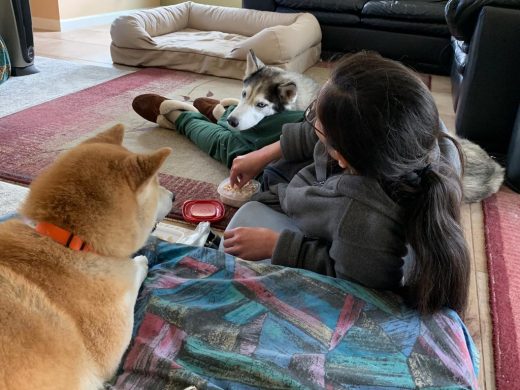
Other similar emotion based arguments include –
- This training technique is used by dogs or wolves on each other, therefore, it must be effective/good/right.
- These training techniques have worked on all of my dogs, therefore it must be effective/good/right.
- I use my training techniques on rescues and death-row dogs, therefore, it must be effective/good/right.
- Dogs are individuals and will respond differently to different motivators, therefore my training technique is more effective for some dogs.
- When used properly, my training technique is not abusive, therefore it is effective/good/right.
After we use a technique and have argued for it with others, we tend to stick to our convictions. Commitment to consistency is one of the key rules of influence described by Cialdini. Consistency builds trust and increases our chances of being accepted by others. These are useful for our survival, so they make us feel good. Furthermore, nobody likes being wrong because being wrong makes us feel guilt, pain, fear, and other uncomfortable emotions.
As a result, once we decide on the goodness or badness of something, our emotions make us resistant to changing our minds, even when confronted with overwhelming facts.
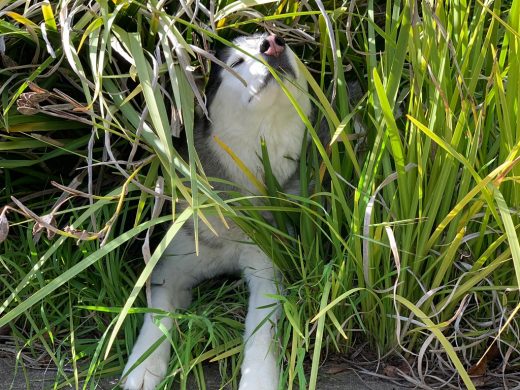
Emotional Awareness
In truth, most discussions about dog training are really more about us and our emotions, rather than about our dog. Teaching or training a dog involves the dog and all the people around her. However, the dog is not the one reading up on training books or having online discussions, so really, the training is more about us, the primary caregivers.
Emotions are the mover of actions and they play a very significant role in our lives. Yet, we spend most of our time trying to avoid them because we perceive them to be bad, messy, and a sign of weakness. When we try to ignore or suppress our emotions, we prevent them from rising to our consciousness. By doing so, we give up our ability to override their prescribed action and become controlled by them. Emotions such as fear, pain, and anger, narrows our attention so that we lose our ability to see the big picture. I have been controlled by my frustration and anger many times, and these situations have a high cost.
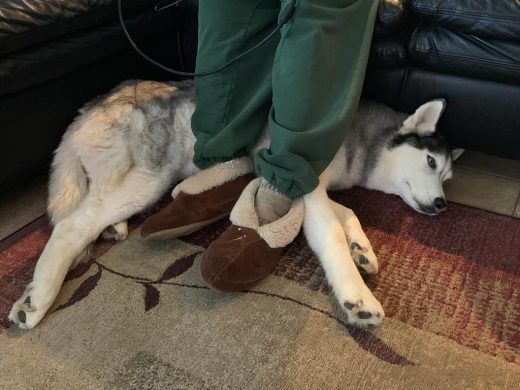
For example, when a fellow Shiba friend introduced me to this new Mother Theory for dog training. I thought,
Here we go again, another self-proclaimed expert peddling the same baseless nonsense from 15 years ago, with statistics pulled out of his ass. Through the use of emotionally moving stories and language (like ‘mother’s love’), others will listen to him to the detriment of their dogs.
I was feeling frustrated and then angry. The Mother’s Love language combined with an emotionally repressive model of training (no talk, no touch, no emotion) brought up difficult memories of my own childhood. They also made me think about the dogs I had recently lost, especially Shania, who was my beloved and soul-mate. Our relationship was filled with talk, touch, and a lot of love, but also fear, pain, and suffering, when I lost her at the end. To avoid this pain, my very clever mind redirected me into using blame. Blame this new misguided theory, blame all the imaginary people who will believe it, blame myself for getting upset over it, do anything to redirect from the true source or true pain of the issue. At the base of this, is my own fear of suffering.
In this case, using unskillful speech and words such as misguided, baseless, and nonsense, will hardly endear me to anyone. In fact, it will likely anger many, result in retaliatory speech, cause more suffering, and do nothing to convince others’ of my position. On the contrary, it will push them farther away. Ultimately, responding with anger does nothing to help and creates a lot of suffering, not just for others but most of all for myself. It also closes my mind to new ideas and makes me emotionally brittle.
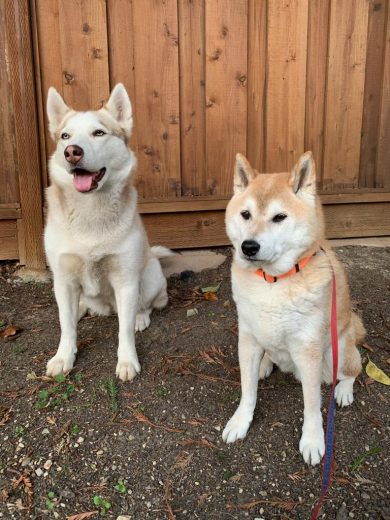
Mindful Dog Training
Mindful dog training uses mindfulness techniques to insert our consciousness back into every step of the dog training process. When we are aware of our emotions, we can respond in a more healthy and helpful fashion, thereby not contributing to the suffering of self, dog, and others. Mindfulness is the practice of shifting our awareness repeatedly back to a given target object. Early mindfulness exercises focus attention on our breath, or on certain activities like walking or eating. In the beginning, our mind may be restless because we are used to avoiding our difficult emotions, worries, and thoughts. Fear or more generally aversion is a big force in my emotional landscape. As I described above, my fear of pain and suffering caused me to redirect to false objects, and to avoid fear with anger.

I use mindfulness to focus awareness on my emotions, so that I can practice catching afflictive emotions such as fear, anger, and dissatisfaction, before they start to control me, narrow my focus, and cause me to act in unskillful ways. Once I am able to do this, I apply introspective awareness to try and identify, then process the actual root cause of my difficult emotions. In this way, I try to face my suffering, learn from them, weaken the problematic patterns, and free my mind from unnecessary pain. There are a variety of methods for emotional regulation using mindfulness, including the RAIN and RULER methods.
With mindful dog training, I try to be mindful of my emotions in everything that I do. Dogs are very sensitive to our emotions, and respond much better to a calm person than to a fearful or angry one.
- We stay mindful when reading up on dog training techniques so that we catch emotional arguments and any associated logical fallacies.
- We stay mindful when discussing dog training techniques so that we use skillful speech, do not force our opinions onto others, and do not create more suffering for ourselves or others. We apply skillful listening and carefully evaluate new training techniques.
- We stay mindful when deciding which dog training techniques to experiment with our dog so that we make the best decision, picking the techniques that have the greatest chance of success and lowest risk.
- We stay mindful when training our dog so that we remain calm and stable. Emotions are contagious so this will have a calming effect on our dog. Similarly, fear, excitement, or anger, can hype our dog up and worsen his behavior.
- We stay mindful when evaluating the results of a dog training technique so that we make proper adjustments when necessary. If the results are unsatisfying, we are courageous enough to try something else.
- We stay mindful when we make mistakes so that we learn as much from them as possible and apply our knowledge in future training exercises.

In dog training, our emotions greatly affect our dog and our dog’s emotions will also affect us. Our job is to regulate afflictive emotions so that we can balance out our dog, especially if she has had difficult past experiences or abuse that cause emotional instability. Instead of letting our emotions control us, we remain emotionally aware, consciously regulate our emotions, increase our understanding of self, and cultivate positive mental states and habits. Staying mindful and facing my emotions is not easy, but it is the best thing I ever did for myself. Facing my emotions, pain, and fears allow me to think anything, feel anything, remember anything, and attain limitless mental freedom. Facing fear opens up the way to love, happiness, wisdom, and liberation.
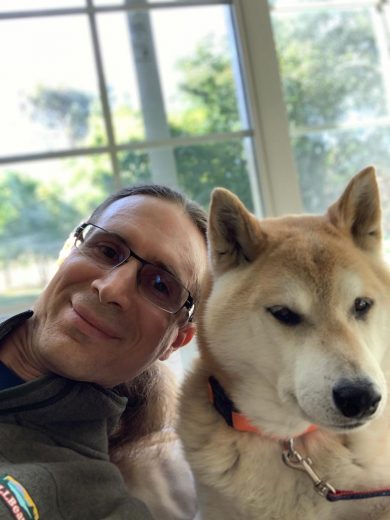
This is a great article. I totally get what you are saying. I do not work with Shiba’s, however, this is true for all breeds/mutts.
All your articles are amazing and when not learning something new, it is a great refresher. Which is much more important as a trainer.
Sharing a link to your page for my students.
Thank you for all your articles.
Thank you for your very kind words. They are greatly appreciated.
I’m drafting an article on how to choose a trainer for Basenjis. Mindful dog training makes so much sense for our breed. I’d like to include a link to what you write. Let me know if you that’s acceptable.
I read an earlier comment about one of your Shiba’s being a reaction junky and mentioned it to my husband who finally understood not to yell and flail his arms around.
I would love it!
Great article. I totally agree with all of your training advice . My male Shiba is so in tune to my emotions. Nice to see you blogging again! Will you be blogging regularly again?
Thank you Rick. At the moment I am just going with the flow. I have been writing more, but usually only when I have something to say. 🙂